How to Take Queat Faucet Feed Pipes to Cpvc on Mobike Home
Mobile home plumbing is a bit different than plumbing in a site-built home. This article will help you learn how manufactured home plumbing differs from a site-built home, the different piping used, and, of course, how to repair the most common mobile home plumbing issues.
Major Differences Between Site-Built and Manufactured Home Plumbing
Manufactured homes use the same basics and logistics as site-built homes in their plumbing system designs but there are a few obvious differences between the two.
The main differences are the location of the pipes, the size of the pipes used, and the 'simplification' of the system due to the amazing factory-built system that has been perfected by the industry over the decades.
Supply Line Location
The location of the plumbing pipes is different in manufactured homes simply because the homes are built differently.
Supply lines are what the water travels through to reach each fixture. In site-built homes, they are typically running inside the walls. In manufactured homes, they are almost always buried under the floor as the image below shows.
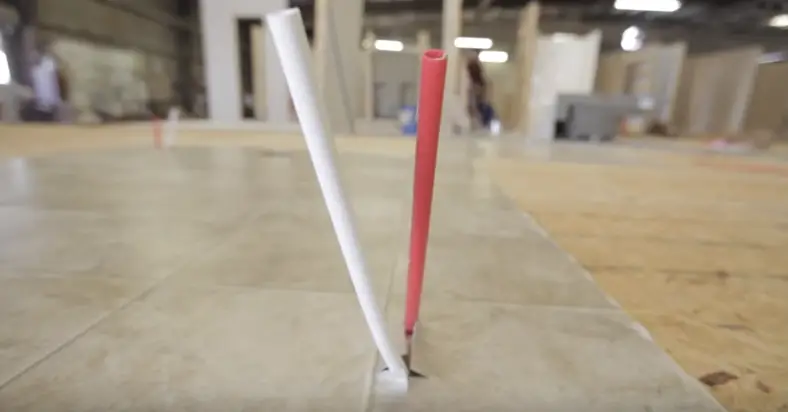
In manufactured homes, plumbing supply lines run under the home either in the middle alongside your heating ducts or on the side, depending on the layout and location of your water heater. The image above is a photo of a home being built in a factory. Notice how both the hot and cold PEX water lines are stubbed up through the floor before a single wall is even placed. The construction system, along with the plumbing system, of a manufactured home is simplified for easy transport and installation but that doesn't mean it's inferior in any way.
Cleanouts and Cut-Off Valves
Another big difference is the lack of cleanouts and cut-off valves in the home though newer manufactured homes have those now. There will be a cleanout where the home's waste drain line meets the sewer or septic trunk outside.
It's smart to have cut off valves at every water source (faucet, tubs, and toilet). However, if you have to repair or replace anything on a manufactured home plumbing system you have to cut the main valve off anyway because there's a lot of pressure in those lines and it needs to be reduced before you start cutting into them.
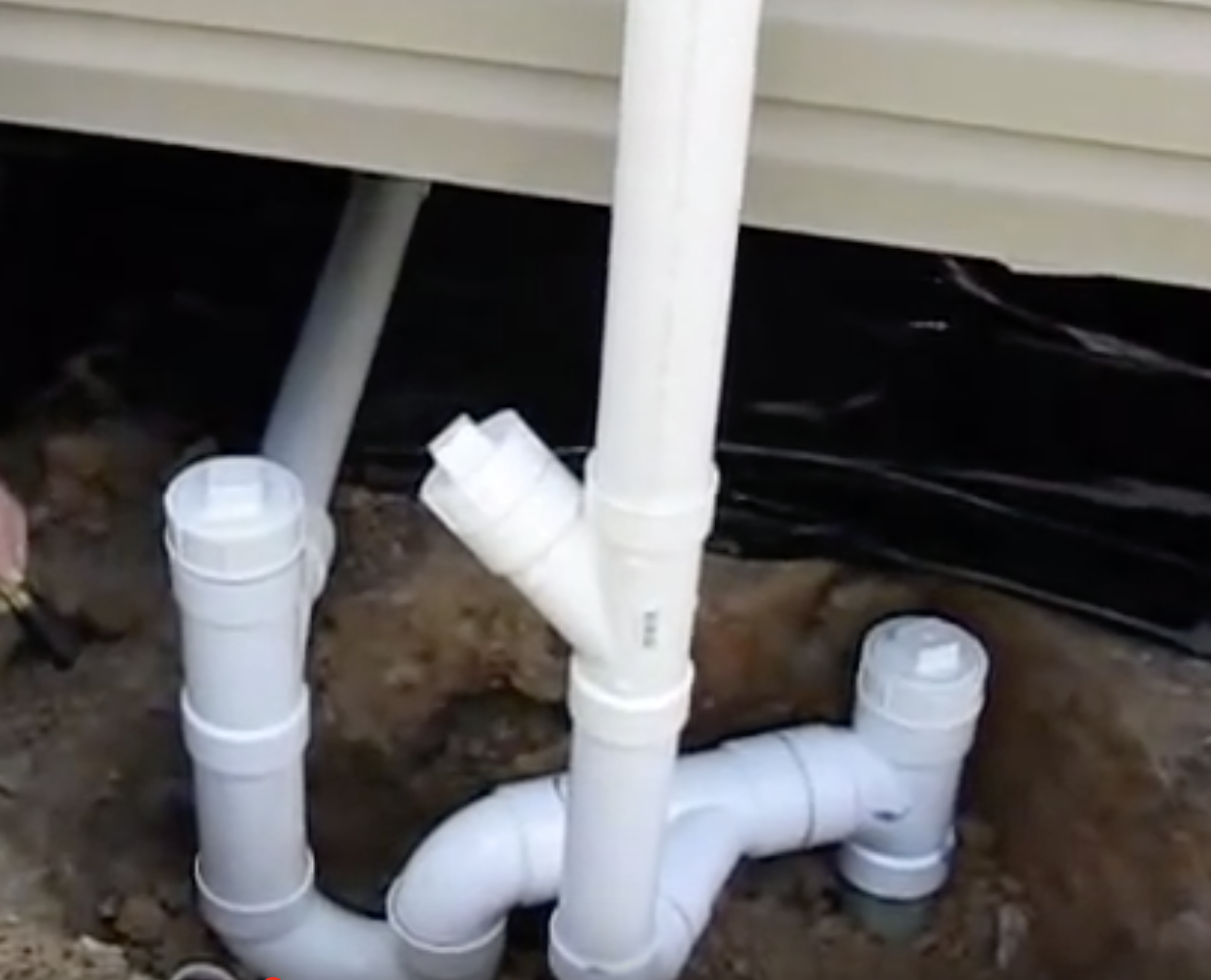
Plumbing Pipe Sizes for Manufactured Homes
Pipe size plays a big role in a plumbing system. Using pipe that is too small for your venting can cause just as much trouble as using too small of a pipe for your waste line.
Many manufactured home builders install a smaller pipe (3″) for drainage and venting. Site-built homes would have 4″.
Myths about Plumbing in Manufactured Homes
It's no secret that many skilled trade professionals like plumbers and electricians dislike working on manufactured homes. This is caused by a couple of myths and a couple of truths.
One myth about plumbing in manufactured homes is that there is no venting for the drain lines and that's ridiculous. All drain-waste lines need venting to even work. Otherwise, the system would become air-locked.
Another myth is that the manufactured housing industry uses substandard and unsafe pipes. Some manufactured home builders did use plastic polybutylene and galvanized metal pipes which were standard at the time for all homes. It was later learned that the material had issues. We'll talk about that in detail in a few moments.
3 Parts of Manufactured Home Plumbing Systems
Basically, there are 3 parts that make up the whole plumbing system: supply lines, drain-waste lines, and ventilation lines.
Supply Lines
Your water supply lines are the smaller pipes (3/8″ to 1″) that come into the home. They are usually either copper or Pex. If your home has white, cream, or a medium grey pipe for your supply lines, you will probably want to replace them as most local regulations don't recommend them and some have banned them altogether. The water comes through 1 line and then branches at the water heater so some water can get heated, from there a hot and cold line runs parallel to the faucets, tubs, etc.
Drain Lines
Drain or waste lines are usually 3″ ABS. These systems use gravity, traps, and ventilation to ensure optimum waste removal at the sewer drop and to keep gases and fumes from building up and releasing.
Think of this as a completely closed system with a positive and negative vacuum or pressure. All the parts have to work correctly to allow the system to do what it is designed for. Without the proper positive or negative pressure acting as a vacuum in the pipes the waste won't go where it's supposed to, it can back-flow instead.
You have to get the grade right on drainage pipes because too much of a grade (or slant) will cause as much issue as too little. A 1/4″ to 1/2″ grade per foot is ideal.
Ventilation Pipes
Ventilation pipes help the waste lines to keep the proper pressure or vacuum – in other words, it keeps water in all the right places. It is just as important as the supply and drain lines and you have to have ventilation in order to make it all work. Plumbing systems are much like a living thing – it has to have air and water.
A single ventilation pipe in a manufactured home won't help the drain pipes furthest away so they use what I've always just called a dry vent (they also call them auto vents, check vents, or air admittance valves).
Air Vents
Air vents allow air to flow into the drains. Keep in mind that oftentimes a dry vent on a sink isn't necessarily helping the sink it is tied into, it's benefiting the other drains in the house. If you would like to learn more about auto vents, this article does well explaining, as does this one.
Under Pressure
Remember that water is coming into your home under a lot of pressure through your supply lines. It can turn corners and go up several stories. If you have a leak in the system, imagine how much water can be lost in just a small amount of time!
Drainage leaks are sneaky little things. Water will always follow the path of least resistance so sometimes it's hard to pinpoint where the leak is coming from.
Common Plumbing Pipe Materials
You will need to know what type of pipe and fittings are used for each sub-system. There are basically 2 types of piping used in plumbing- metal and plastic.
Most plumbing in manufactured homes uses plastic. Plastic pipes include polyvinyl chloride (PVC), chlorinated polyvinyl chloride (CPVC), PEX pipe and PolyPipe®. Metal plumbing pipe consists of copper, stainless steel, and galvanized steel. Not all pipes are as useful or effective as others, and each type is used for a specific purpose in plumbing.

Polybutylene Pipe
Polybutylene was used in all types of homes, including manufactured homes, from the late 1970's to the mid-1990's. Several lawsuits were filed on behalf of millions of homeowners due to issues this material had. If you had any type of bleach in your water, and most city systems do, the pipe would break down and cause leaks and complete blowouts, usually within 5-10 years. You can't buy it anymore but it's still in more homes than it should be. It's a medium grey color and will have PB and some numbers on the side. If you have this in your home today, you need to replace it and then go buy a lottery ticket cause you have been very lucky to have had it this long without any issues!
If you are looking to buy an older manufactured home, do not buy it with this kind of pipe in it. Make the seller replace it or have them take the replacement cost off the price of the home (there may even be local and federal laws prohibiting the sale of a home with this type of pipe in it).
PVC
PVC is a type of plastic plumbing pipe primarily used to transport high pressured water. It is available in several standard sizes, ranging from ½ inch to 4 inches in diameter. PVC pipe is only made to handle cold water, as hot water will cause the pipe to warp. It is generally white in color, though a few varieties are gray.
CPVC
CPVC pipe that has received an extra chlorination. It comes in a distinctive yellow color and can handle both hot and cold water. CPVC is more flexible with substantially thinner walls than PVC pipe and has the same outer diameter as copper pipe, which increases its range of uses.
PEX
PEX, also known as cross-linked polyethylene pipe, was first manufactured in the 1920s but has become more popular in recent years. It shares the same outer diameter as copper and can be used for both hot and cold water. However, PEX pipe has a much higher heat resistance than most other plumbing pipes and is often used in water-based heating systems. It comes in a creamy white color, as well as red and blue which is used to denote hot and cold pipes respectively.
We recommend you replace your water lines with PEX when the time comes to update. You can use special fittings to secure the connections by hand or rent the tool needed to connect the lines. Pex, in our humblest of opinions, is the best pipe for water supply lines and is so much easier to install than anything else.
PolyPipe®
PolyPipe is a thick black pipe used to transport highly pressurized water, usually to and from the home. It is used almost exclusively outdoors and is usually buried underground to prevent freezing. PolyPipe® is extremely rigid, and is rarely used for other purposes.
Here's a good video about a double wide re-pipe:
Copper
Copper is the most common type of plumbing pipe used in the home, although it is more expensive than plastic piping. It is especially resistant to corrosion and can withstand high temperatures. Copper pipes come in three different sizes – type M, L, and K. Type M have very thin walls, while type L is of medium thickness, and type K is the thickest of the three.
Galvanized
Galvanized pipe is known for rust issues and the plastic piping (polybutylene) are known to corrode and cause leaks. There's also an issue with the connections. If you find yourself plagued with leaks, go ahead and re-pipe the home, if possible.
Galvanized pipes have been used in homes for years, typically to carry water in and out of the house. The galvanized coating prevents rusting and gives a dull gray appearance. Use of these heavy duty pipes is diminishing, as it is being replaced by PEX pipe, which is less expensive and just as durable. Galvanized pipes typically come in sizes between ½ inch and 2 inches in diameter.
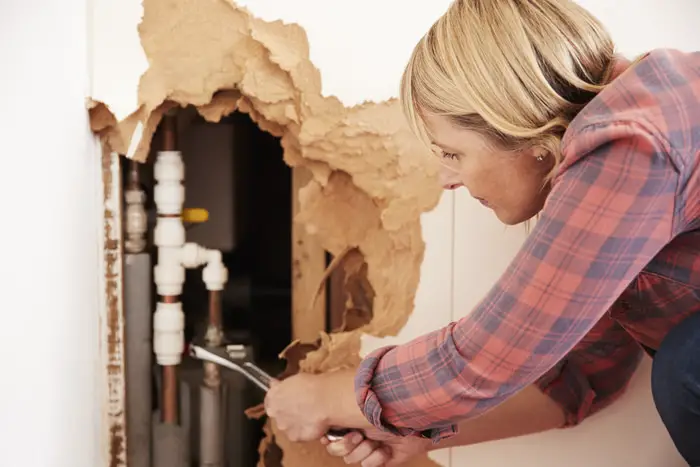
Common Plumbing Issues in Manufactured Homes
Nasty smells and weird noises
Ventilation issues are very common in manufactured homes. The most notable problem being nasty fumes and a build-up of gases that could cause some serious issues.
Ventilation makes your pipes remain at a neutral pressure. Without proper venting, your drainage slows and the water in your P-trap goes away, which in turn allows the nasty smells to escape into your home.
Think of a soda bottle: when you tip it half way, the liquid smoothly flows but when you turn it completely upside down, it makes gurgling sounds and the soda pours out slowly. That's what happens when there's not enough ventilation or air flow.
There are wet vents and dry vents, the roof pipe is considered a wet vent.
If you hear weird sounds coming from your walls when the water is draining (not when water is running) you most likely have a venting problem.
Venting issues are hard to find. The easiest cases will either be a clogged vent stack, separation of a vent line somewhere, or a failed auto-vent under a sink.
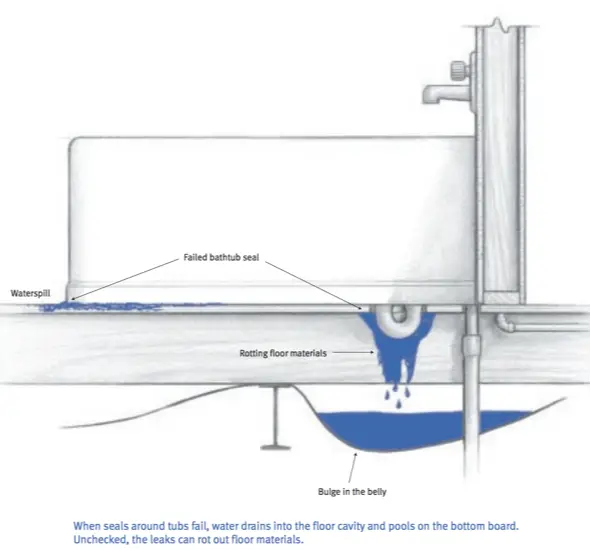
Plumbing Leaks
Plumbing supply lines in manufactured homes will rarely be inside a wall so you won't need to worry too much about damage to walls. When there is a leak it's usually the floors, sub-flooring, insulation, and HVAC ducts under the home that get damaged.
If your flooring is made of composite wood or MDF it will soak water up like a sponge. Wet MDF eventually bows and rots.
In the end, it will be far cheaper, and less stressful, to just cap off the old lines and run new water supply lines than trying to fight with old material and patches.
Area plumbing codes will be the ultimate factor in deciding what material to use but Pex is a popular product and as long as the connections are high quality and a proper seal is made, will be your best choice for supply lines.
A monthly check under your sinks and under the home itself is a good idea.
Leaks, clogs, low pressure, obnoxious odors, and having no hot water are just a few of the issues that you may encounter. If your manufactured home is older you may have to replace the system entirely. There are lots of things that can go wrong! We'll try to cover them all in the future.
Leaking Faucets
Leaking can occur in a couple of different places on a faucet. It's probably easier to just replace the whole unit than repair. If you are especially attached to your faucet, this article about fixing leaking faucets should help.
Clogs in your kitchen Sink
If there is a clog in your sink, a plunger can work well. They make a smaller plunger for the task. If you have a two-sided sink, close off one side by stuffing a rag into the drain (cut off air) and plunge the other side, then switch – keep doing it until the clog is gone.
If you have clog issues frequently, it may be time to find the underlying issue. You can remove your p-trap, if it's closed off with grease you can clean it out or replace it. You may need to add a dry vent to the next closest sink.
How to Turn Your Water Off
Knowing where and how to turn your water off in case of an emergency, or before any repair, is important. Being able to shut your water off quickly can be the difference in a complete disaster and a small inconvenience.
The first place to go is the main stop valve for your home which should be around your utility room or around your outside garden hose water connection (hose bib as some call it).
If you can't find your home's main stop valve you'll need to cut the water off at the main water meter (assuming you are on a city system) or in your pump house if you are on a well system.
Most city or town supplied city water systems require a water meter key. This is a five-sided pentagon wrench that unlocks the meter cover. They come in different sizes so check what size you need.
If you can't find a meter key you can also use a wrench and long screwdriver for a makeshift key – place a wrench straight up and down and then thread the screwdriver through the hole at the end of the wrench. The two tools will look like a T. Use the screwdriver to turn the wrench. This article about turning off your water supply is handy if you want to read more.

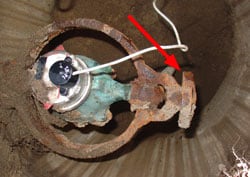
Once you get the cover off the water meter cover you'll see a knob or nut that you can twist to turn the water off. To work on the home's plumbing system you'll need to drain the supply line system so the pressure is released.
We've covered the basics of plumbing in manufactured homes: how the systems work, where everything is located, and what your choices are for pipe materials. We also covered the 5 most common mobile home plumbing issues and how to troubleshoot them.
Our article, How to Diagnose and Repair Venting Issues in Your Mobile Home Plumbing System, can help you learn more about venting issues.
Thanks so much for reading Mobile Home Living!
Featured Image: 37 Sequoia Circle, Santa Rosa CA listing photos.
Source: https://mobilehomeliving.org/plumbing-in-manufactured-homes-the-basics/
0 Response to "How to Take Queat Faucet Feed Pipes to Cpvc on Mobike Home"
Postar um comentário